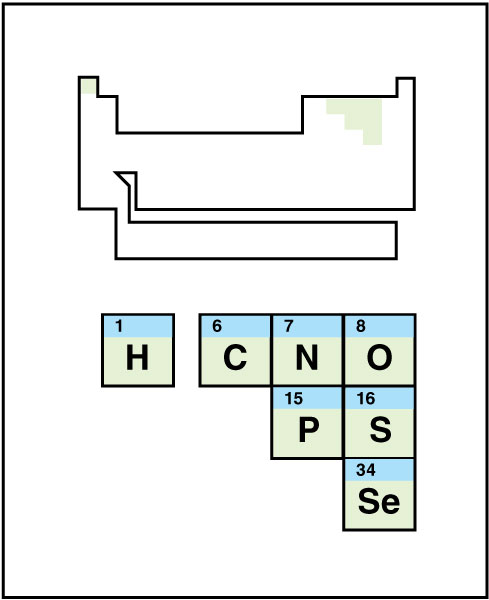Nonmetal is any of a class of chemical elements mostly found in the upper right corner of the periodic table. The nonmetals include carbon, nitrogen, oxygen, phosphorus, selenium, and sulfur, along with the halogens (see Halogen ). Also considered nonmetals are helium and the other noble gases (see Noble gas ). Although hydrogen is found at the top of group 1 in the upper left corner, chemists often include it among the nonmetals.

Nonmetals share certain common properties. For example, nonmetals typically conduct heat and electric current poorly. While most metals are shiny and many are silvery, nonmetals usually appear dull and exhibit a wide range of colors. For example, at room temperature sulfur is yellow and iodine is blue-black. Phosphorus can adopt several different colors, depending on how its atoms are bonded. As solids, nonmetals are brittle and break easily.
All metals are solids at room temperature except mercury, which is a liquid. Nonmetals, on the other hand, can be solid, liquid, or gas at room temperature. Nonmetals that are gases at room temperature include chlorine, fluorine, hydrogen, nitrogen, oxygen, and all of the noble gases. Bromine is a liquid at room temperature. Other nonmetals are solids, including carbon, iodine, phosphorus, selenium and sulfur. Astatine, which is radioactive, has never been prepared in sufficient quantities to be visible to the unaided eye.
In forming compounds with metals, nonmetals typically gain electrons to become negatively charged ions, called anions. When two nonmetals combine, they usually share electrons. A pair of nonmetallic elements can often combine in different ways, forming more than one compound. For example, a carbon atom (chemical symbol, C) can combine with one oxygen atom (O) to make carbon monoxide (CO). Alternatively, it can combine with two oxygen atoms to make carbon dioxide (CO2).
